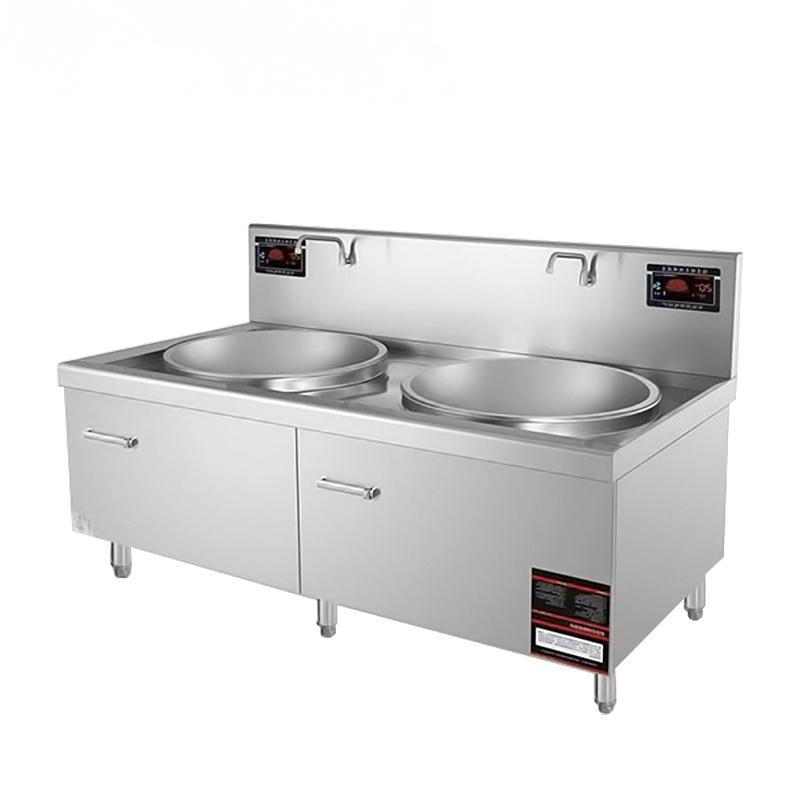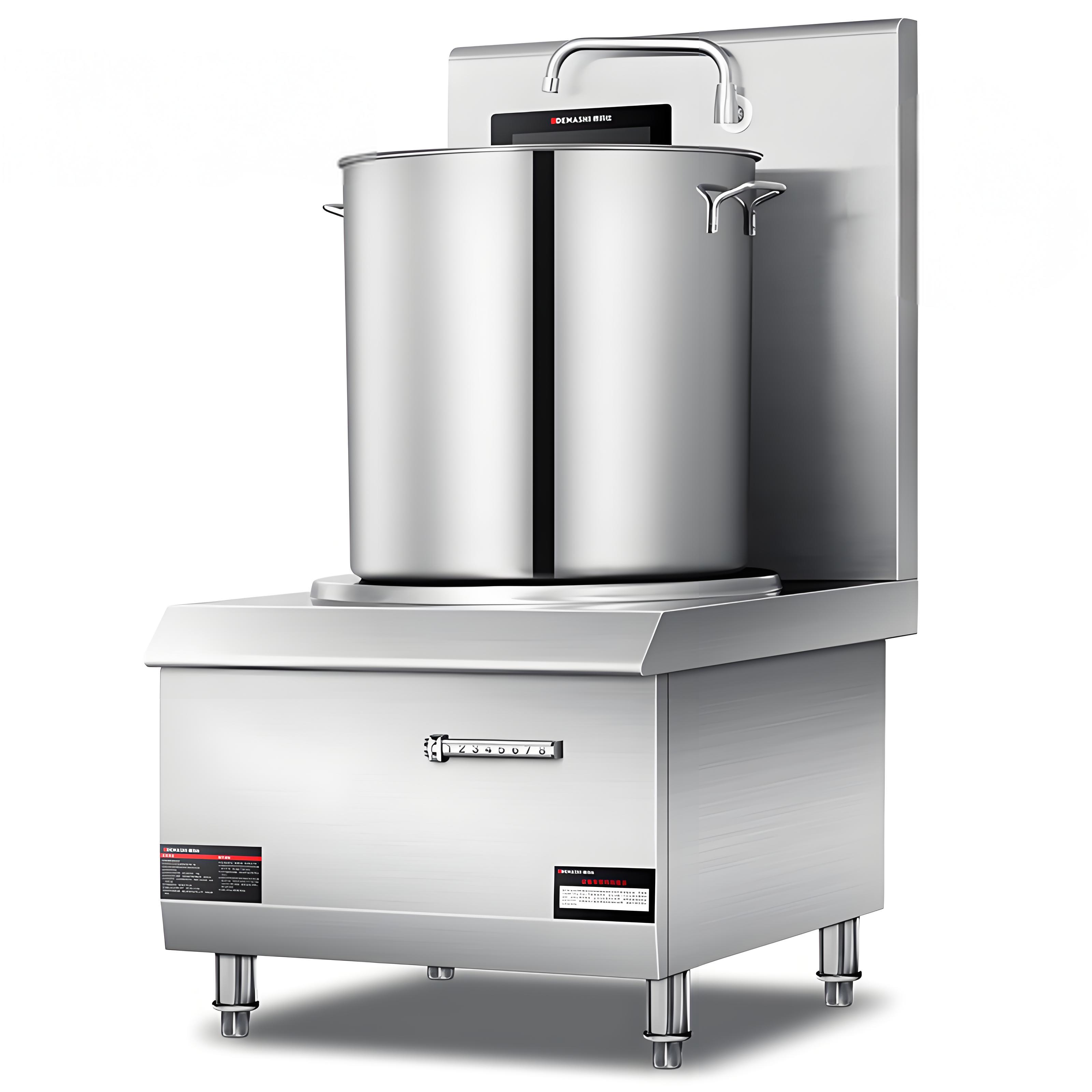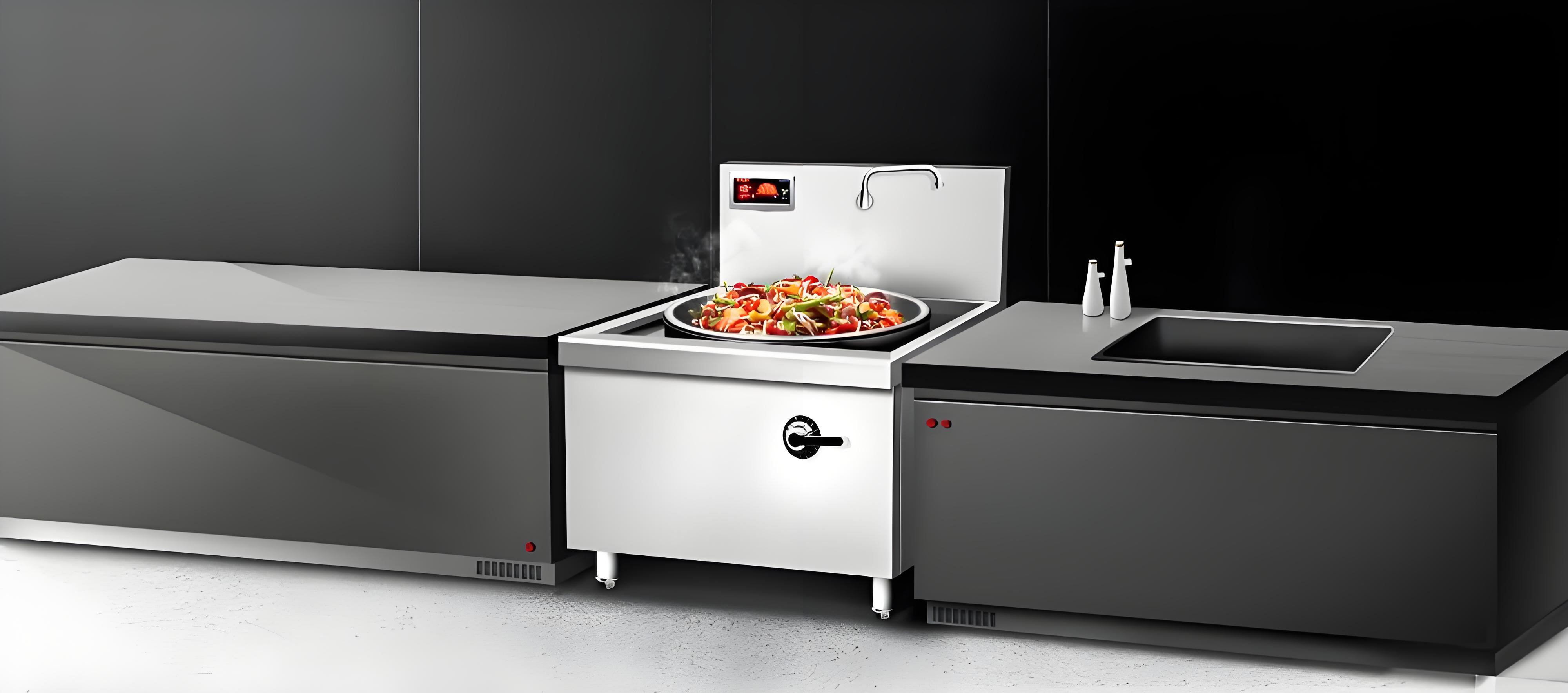As someone who’s been elbow-deep in commercial kitchen setups for years, from running a bustling food truck to helping friends launch their restaurants, I’ve come to rely on induction cooking for its speed, safety, and precision. But when it comes to outfitting a kitchen, one question I get asked a lot is: “What’s the difference between commercial large-pot induction cookers and small-pot stoves?” It’s a great question, especially if you’re trying to decide which one fits your operation. Having worked with both types extensively, I’ve seen how their differences impact everything from menu planning to workflow. In this article, I’ll break down the key distinctions between large-pot induction cookers and small-pot stoves, share my experiences, and help you figure out which one suits your kitchen best.

Why Choosing the Right Induction Cooker Matters
In a commercial kitchen, your cooking equipment is the heartbeat of your operation. Whether you’re simmering sauces for a food truck or boiling vats of broth for a banquet hall, the right induction cooker can save time, reduce energy costs, and keep your staff safe. Large-pot induction cookers and small-pot stoves are both powerful tools, but they’re designed for different tasks, capacities, and workflows. Picking the wrong one could mean wasted space, inefficient cooking, or even equipment failure under pressure. I learned this firsthand when I tried using a small-pot stove for a catering event that required massive stockpots—let’s just say it was a stressful day. Let’s dive into the differences to help you avoid similar missteps.
Key Differences Between Large-Pot Induction Cookers and Small-Pot Stoves
To understand which induction cooker is right for your kitchen, we need to look at their design, functionality, and use cases. Here are the main differences I’ve observed from using both types in various settings:
Pot Size and Capacity
Large-Pot Induction Cookers: These are built for high-volume cooking, handling pots with diameters of 12-24 inches or more and capacities of 20-100 liters. They’re ideal for preparing large batches of soups, stews, or stocks. I’ve used these in banquet kitchens where we needed to feed hundreds of guests at once.
Small-Pot Stoves: Designed for smaller cookware, typically 6-12 inches in diameter and capacities of 1-10 liters. They’re perfect for à la carte cooking, like sautéing vegetables or simmering sauces. My food truck relies on small-pot stoves for quick, single-order dishes.
Power Output
Large-Pot Cookers: These pack a punch with 5,000-20,000 watts of power, delivering rapid heating for large volumes. They often require three-phase electrical systems to handle the load, which I’ve found common in industrial kitchens.
Small-Pot Stoves: Typically range from 1,800-3,500 watts, sufficient for smaller pots but not enough for massive batches. They usually run on single-phase power, making them easier to integrate into smaller setups like my food truck.

Size and Footprint
Large-Pot Cookers: These are bulky, often 2-4 feet wide and designed to stay stationary. They’re built into kitchen lines or placed on sturdy bases to support heavy pots. I’ve seen them dominate space in large restaurants but struggle in cramped kitchens.
Small-Pot Stoves: Compact and portable, usually 12-18 inches wide. They’re countertop-friendly, which is why I love them for mobile setups or small cafés where space is tight.
Control and Precision
Large-Pot Cookers: Often feature basic controls like knobs or push-buttons, focusing on high power over fine-tuned adjustments. Some high-end models have digital displays for temperature settings, but precision isn’t their main strength. I’ve found them great for boiling but less ideal for delicate tasks.
Small-Pot Stoves: Offer precise control with touchscreens, sliders, or digital buttons, allowing exact temperature settings (e.g., 140°F for tempering chocolate). They’re my go-to for dishes that need careful heat management.
Use Cases and Kitchen Type
Large-Pot Cookers: Best for high-capacity kitchens like banquet halls, institutional cafeterias, or soup kitchens where bulk cooking is the norm. They’re not practical for small-scale operations.
Small-Pot Stoves: Suited for fast-paced, small-batch cooking in food trucks, cafés, or restaurants with à la carte menus. They’re versatile but can’t handle industrial-scale tasks.
Cost
Large-Pot Cookers: More expensive, ranging from $2,000-$10,000 depending on power and features. The cost reflects their heavy-duty build and high output.
Small-Pot Stoves: More affordable, typically $200-$2,000. I started with a budget small-pot stove for my food truck, and it was a cost-effective choice.

Comparison of Large-Pot Induction Cookers vs. Small-Pot Stoves
To make the differences clearer, here’s a table summarizing key factors:
| Feature | Large-Pot Induction Cooker | Small-Pot Stove | Best For |
|---|---|---|---|
| Pot Size/Capacity | 12-24+ inches, 20-100L | 6-12 inches, 1-10L | Bulk vs. small-batch cooking |
| Power Output | 5,000-20,000W, three-phase | 1,800-3,500W, single-phase | High-volume vs. versatile tasks |
| Footprint | Bulky, 2-4 ft wide | Compact, 12-18 in | Large vs. small kitchens |
| Control Precision | Basic, high-power focus | Precise, digital | Boiling vs. delicate cooking |
This table shows that large-pot cookers are heavyweights for bulk tasks, while small-pot stoves shine in precision and portability.
My Experience with Both Types
When I launched my food truck, I relied on a small-pot induction stove (an Avantco IC3500) for its compact size and precise controls. It was perfect for whipping up single servings of stir-fries or sauces, and I could easily store it when not in use. The touchscreen panel let me dial in exact temperatures, which was a lifesaver for dishes like hollandaise that needed low, steady heat. But when I took on a catering gig for a 200-person event, that small stove couldn’t keep up with the 50-liter stockpot of soup we needed. I ended up borrowing a friend’s large-pot induction cooker, and it was a revelation—boiling water in minutes and maintaining a steady simmer for hours. However, its size and power requirements made it impractical for my truck.
Later, when I helped set up a friend’s restaurant, we installed a large-pot cooker for their signature pho broth, which required cooking 80 liters at a time. For their à la carte dishes, we paired it with a couple of small-pot stoves for sautéing and searing. This combo worked beautifully, showing me how the two types complement each other in a mixed-use kitchen.
When to Choose a Large-Pot Induction Cooker
Based on my experience, large-pot induction cookers are the right choice if:
You’re cooking for large groups (50+ people) regularly, like in banquet halls or institutional kitchens.
Your menu relies on bulk recipes, such as soups, stews, or sauces.
You have a spacious kitchen with three-phase power to support high wattage.
You prioritize speed and capacity over precision control.
For example, a soup kitchen I worked with used a large-pot cooker to prepare 100 liters of chili daily. It handled the load effortlessly, but the basic knob controls meant staff had to monitor it closely for temperature consistency.

When to Choose a Small-Pot Induction Stove
Small-pot stoves are better suited for:
Small or mobile kitchens, like food trucks, cafés, or pop-ups where space is limited.
À la carte or small-batch cooking, such as stir-fries, sauces, or desserts.
Kitchens with single-phase power or budget constraints.
Tasks requiring precise temperature control, like tempering or low-heat simmering.
My food truck’s small-pot stove was a lifesaver for quick dishes, and its portability meant I could rearrange my setup for different events. The digital controls also made it easy to train new staff.
Practical Considerations for Both Types
To help you decide, here are some practical tips I’ve picked up:
Power Requirements
Check your kitchen’s electrical setup. Large-pot cookers often need three-phase power and a dedicated circuit, which may require an electrician. Small-pot stoves usually plug into standard 120V or 240V outlets, making them easier to install. I had to upgrade my food truck’s electrical system to handle a second small-pot stove, so plan ahead.
Cookware Compatibility
Both types require induction-compatible cookware (ferromagnetic materials like cast iron or stainless steel). Large-pot cookers need heavy-duty pots to handle high volumes, while small-pot stoves work with standard pans. I always test cookware with a magnet to ensure it works.
Maintenance
Clean daily with a damp cloth and mild detergent to prevent grease buildup, especially around control panels. Large-pot cookers have more surface area, so cleaning takes longer. Small-pot stoves are quicker to wipe down, but their digital panels need careful handling to avoid water damage.
Staff Training
Small-pot stoves with digital controls may require training for precise settings, while large-pot cookers are simpler but need monitoring for consistent results. I run quick demos for my team to ensure everyone’s comfortable with the equipment.
Ventilation
While induction cookers produce less ambient heat than gas, large-pot cookers generate significant steam when boiling large volumes, so ensure proper ventilation. Small-pot stoves are less demanding, but I still use a hood for heavy frying.

Cost and Budget Considerations
Large-pot induction cookers are a bigger investment, with prices ranging from $2,000-$10,000 depending on power, size, and features. They’re worth it for high-volume operations but overkill for small setups. Small-pot stoves are more accessible, costing $200-$2,000, making them ideal for startups or mobile kitchens. I started with a $300 small-pot stove and scaled up as my business grew, which was a smart financial move.
Alternatives to Induction Cookers
If neither option feels right, here are other cooking solutions I’ve explored:
Gas Ranges: Great for high-volume cooking with tactile controls but less precise and require gas lines.
Electric Radiant Cooktops: Cheaper but slower and less efficient than induction.
Commercial Woks: Specialized for large-scale stir-frying but not versatile for other tasks.
Portable Butane Burners: Affordable for small setups but less safe and slower than induction.
Final Thoughts
What’s the difference between commercial large-pot induction cookers and small-pot stoves? Large-pot cookers are powerhouses for high-volume, bulk cooking in spacious kitchens, while small-pot stoves excel in compact, precision-driven setups for small-batch dishes. My experience has shown that the right choice depends on your menu, kitchen size, and budget. A large-pot cooker transformed my friend’s pho restaurant, while small-pot stoves keep my food truck nimble. Assess your needs, check your power setup, and invest in quality equipment, and you’ll have a kitchen that runs like a well-oiled machine.
Here’s to cooking up success in your commercial kitchen!

Frequently Asked Questions
Q1: Can I use a small-pot stove for large pots?
A: Not effectively. Small-pot stoves lack the power and surface area for pots over 12 inches or 10 liters, leading to slow heating or uneven cooking.
Q2: Do large-pot induction cookers need special wiring?
A: Yes, most require three-phase power and a dedicated circuit. Consult an electrician to ensure your kitchen can handle the load.
Q3: Are small-pot stoves durable enough for daily commercial use?
A: Yes, if you choose a commercial-grade model from brands like Avantco or Vollrath. I’ve used mine daily for years with no issues.
Q4: Which is better for a food truck, large-pot or small-pot?
A: Small-pot stoves are better for food trucks due to their compact size, single-phase power, and versatility for small-batch cooking.
Q5: Can I use both types in the same kitchen?
A: Absolutely. Combining large-pot cookers for bulk tasks and small-pot stoves for à la carte cooking creates a versatile setup, as I’ve seen in mixed-use restaurants.




